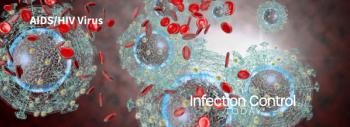
Body Shaving and Turf Burns Spread Infection
Turf burns and cosmetic body shaving were responsible for the spread of a bacterial skin infection among players on a college football team, according to an article in the November 15 issue of Clinical Infectious Diseases, now available online.
Methicillin-resistant Staphylococcus aureus, (MRSA), is a type of drug-resistant bacteria that infects the skin, heart or central nervous system of hospitalized patients. In recent years, though, a more virulent strain has emerged that can infect healthy people. Staphylococcus outbreaks among athletes are becoming increasingly common, due to the players frequent direct person-to-person contact.
Researchers found that 10 percent of players on a Connecticut college football team had MRSA skin infections, for which two were hospitalized. Cornerbacks and wide receivers, who frequently come into direct contact with other players, accounted for the most MRSA cases. Even minor damage to the skin greatly increased players risk of contracting MRSA. The athletes who practiced cosmetic body shaving had a 43 percent risk of infection. Those who sustained turf burns during play were seven times more likely than their teammates to contract MRSA. Players sharing inadequately disinfected whirlpools may have also contributed to the MRSA spread.
The outbreak was stemmed, in part, by the proper disinfection of whirlpools and the installation of antibacterial soap dispensers to the athletes showers. However, there are other ways of helping to control MRSA, according to Dr. Elizabeth Begier, lead author of the study. You may not notice it, but when you are shaving, you create micro-abrasions, said Begier. Its not intuitive to the young men involved in thiseven if you dont see it, there are small breaks there. The researchers recommend discontinuing the practice of body shaving to decrease the risk of infection.
Turf burns may not be entirely preventable, but athletes should take note when they happen, said Begier. When they have these large abrasions during game play they should stop and have them cleaned and covered to reduce the risk of contracting MRSA or transmitting it to other players, she said.
Source: IDSA
Newsletter
Stay prepared and protected with Infection Control Today's newsletter, delivering essential updates, best practices, and expert insights for infection preventionists.






